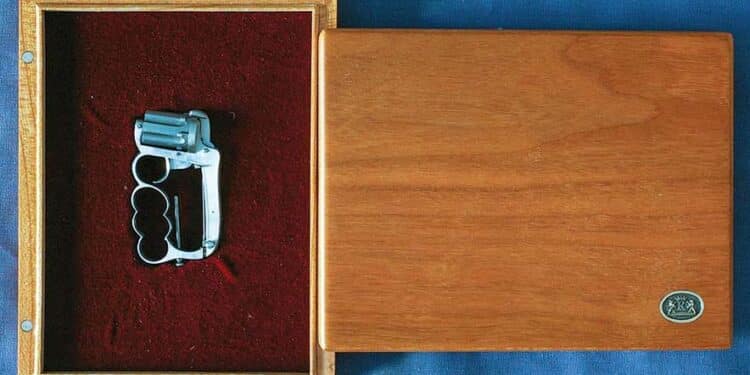Today it is common for car buffs to collect highly detailed scale replicas, and the same is true for airplanes, trains and, yes, even firearms. There are those low-end “die cast” versions, but just as with these other miniatures, there is a notable difference between what is a trinket and what is actually a work of art. Enter the world of small arms scale replicas.
Such items have existed as long as there have been firearms, and, in truth, scale weapons have existed much longer. “There were skilled craftsmen making miniature weapons including cross bows, siege engines and, of course, even suits of armor,” said Wayne Driskill of Wayne Driskill Miniature Firearms (waynedriskillminiatures.com), one of the premier dealers of scale weapons. “I like to say that as soon as someone used the jawbone of an ass as a weapon someone else stepped up and used a jawbone from a baby ass for his son.”
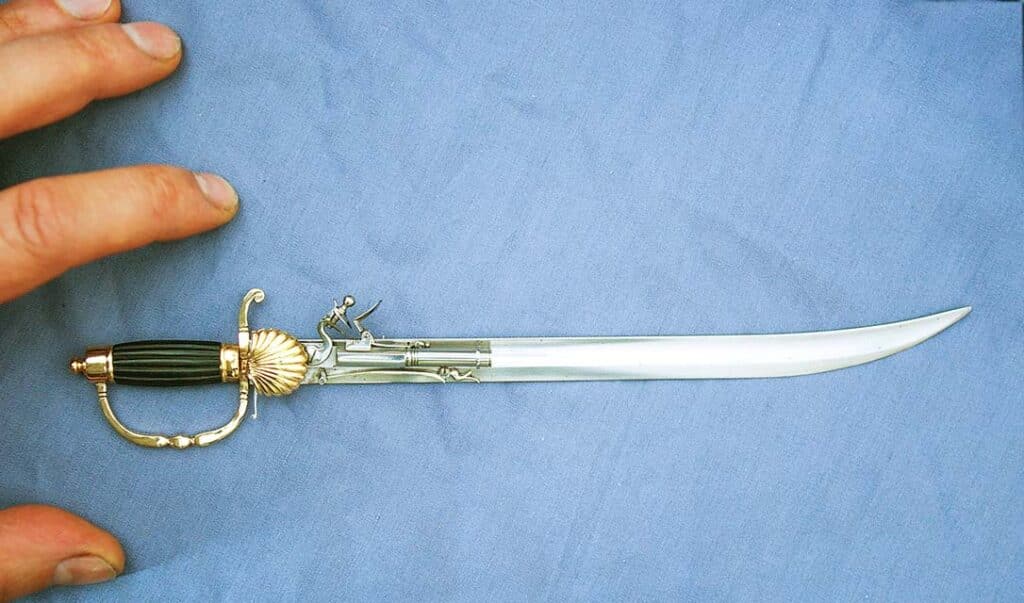
Driskill added that many of the scale models of larger items such as the siege engines and similar weapons were engineering models, but since the late Middle Ages and Renaissance, these served another purpose—namely, “salesman samples.” In some cases, this was a way for journeymen artisans to show off their skills; it was easier for a tradesman to carry scale replicas of actual weapons.
In more recent times these have simply been a way for individuals to show off their skills. In this regard it is akin to model builders, but instead of putting together a kit, those who make scale weapons build everything from scratch. One irony is that while today’s modern world has allowed for all sorts of advancements in 3D printing, laser cutting and computer-aided design (CAD), the art of making scale firearms is a dying one. Perhaps that is because it is, in fact, an art form as few are learning the trade.
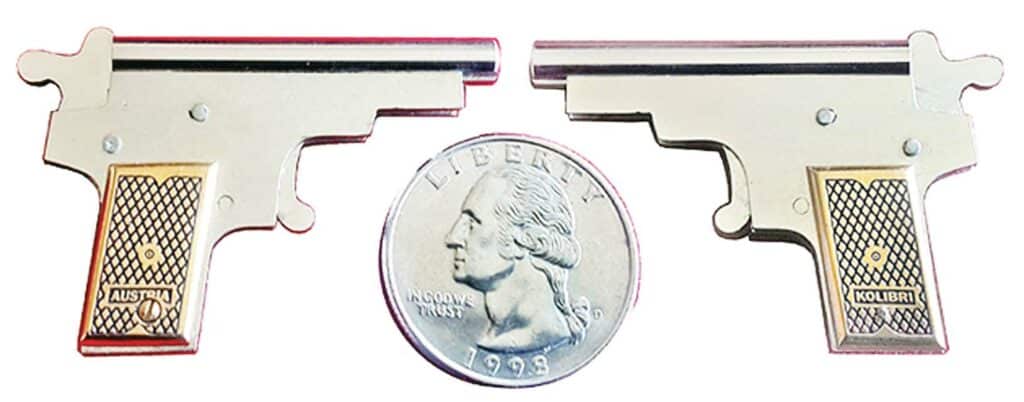
“We’re the last of a dying breed,” admitted Zavie Kucer, who grew up making scale replicas of firearms. It was a skill he learned from his father David Kucer, who is now legendary amongst collectors worldwide and who has been working on the scale replicas for nearly 60 years (kucers.com).
David Kucer grew up as a self-described “immigrant kid” in Montreal, and during a trip to visit his grandparents in New York City he took in the world of miniatures. The elder Kucer became intrigued with miniatures, while his interest in firearms came from his time in the military.
“His job in the Canadian Army was to repair firearms,” said Zavie. “When he got out of the military he started to tinker with making miniature guns. His father had a metal shop, which offered the right tools to make these replicas. So he trained as a gunsmith and worked on everything from small arms to 25 pounders, and combined with his skills with tool and dies it just came together.”
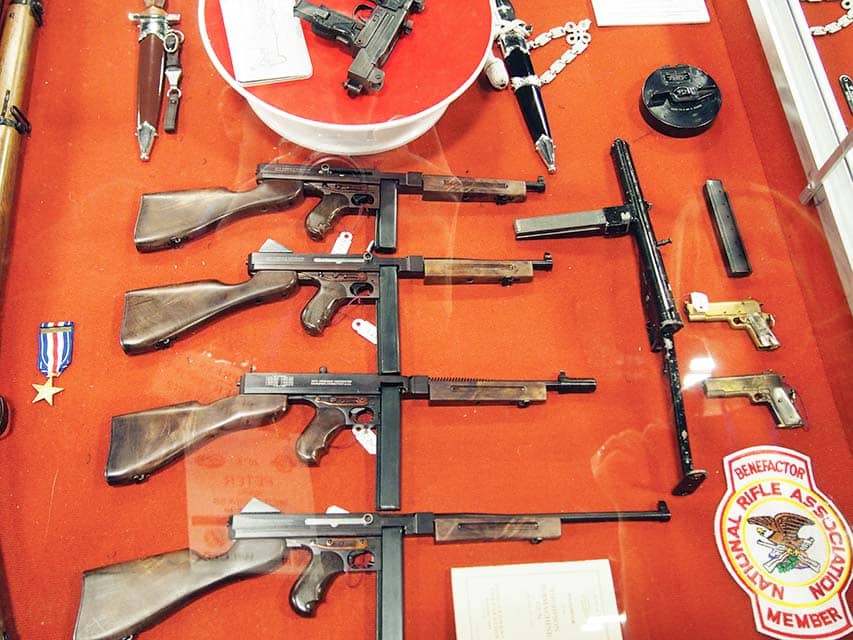
Fully Functional
What sets the world of miniature firearms apart from so many other scale replicas is that these pieces are fully functional. In the Victorian Era, craftsmen produced the scale versions not only as the aforementioned samples to sell actual firearms but as a collectible to those with means. These included pinfire guns that were novelty guns that could fire blanks or even live miniature ammunition.
One of the leading makers of these has been Bob Urso of Washington (boburso.com) who said he likes to think that he fills a middle ground for collectors. “I fill that niche between the inexpensive and the very expensive miniatures,” added Bob Urso. “With my guns I capture the look of the gun, and that includes duplicating the grips where I can. However, the action is greatly simplified compared to what others like Zavie Kucer does. I like to say they make a ‘true miniature’ while mine are simplified, but you can shoot the 2mm round.”
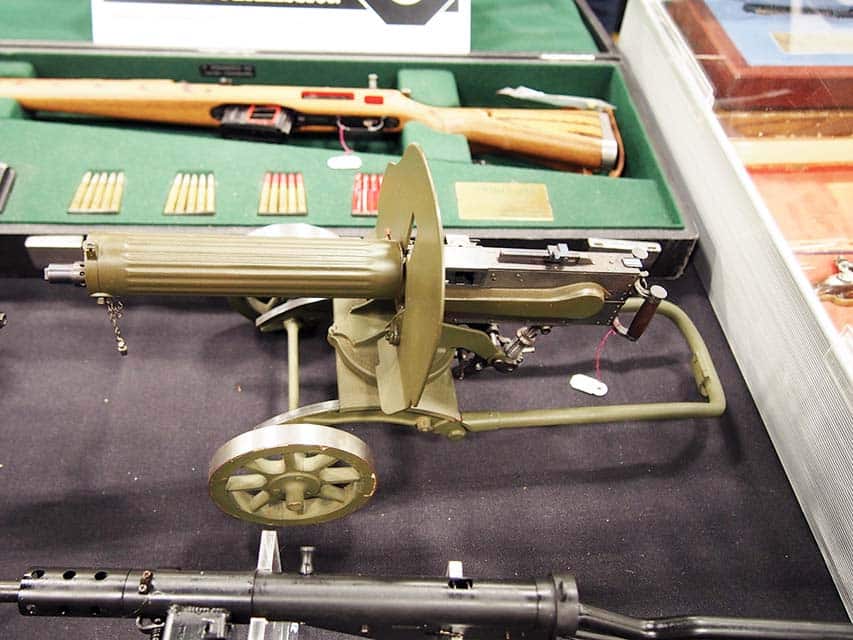
While some of these are detailed and intricate, there is a word that shouldn’t be used to describe them, however: cute. “Cute is for puppies, and these pinfire guns are absolutely still dangerous,” explained Wayne Driskill, who has, since 2009, been the president of the Miniature Arms Collectors & Makers Society, a group that was founded in 1973. “Some will shoot, and some can kill you just the same as a full-sized gun.”
However, most of the miniatures were not made as weapons, and that is true of the scale firearms made by the Kucers. “Our guns could shoot in theory, but in practice not really,” explained Zavie. “We don’t even make the ammunition, so these do go ‘click, click’ when you pull the trigger, but they don’t go ‘boom.’ But it is still a weapon and could be dangerous if used incorrectly.”
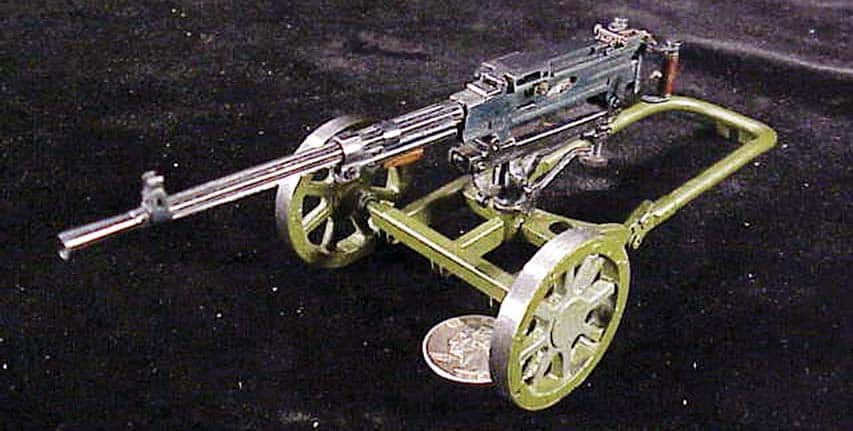
This includes the scale machine guns, some of which have been built to function. This includes a miniature of the British STEN MkII, which was reportedly made by Leon Crottet of Switzerland, and is capable of full-auto fire. Due to the fact that they use custom-made miniature cartridges, these miniatures are reportedly not subject to the National Firearms Act (NFA) regulations of their full-size counterparts, but it wouldn’t be out of the question that these could raise the attention of law enforcement if used irresponsibly!
True Americana
While scale replicas of firearms have been made for centuries, there are plenty of vintage wheel lock and flintlock miniatures in collections. For the Kucers the sweet spot has been in the American small arms of the 19th century. The focus for the father/son duo has been those guns made from 1840 to 1890 and included cap and ball pistols and Winchester repeating rifles. That said, the Kucers have worked on 20th-century firearms as well, with the Colt 1911 being another favorite. “Among the favorite guns I’ve made include a Smith & Wesson Victory Model, which is one the Canadian soldiers used,” said David Kucer. “I also worked on a Smith & Wesson lever action pistol known as the Volcanic. That was an interesting project.”
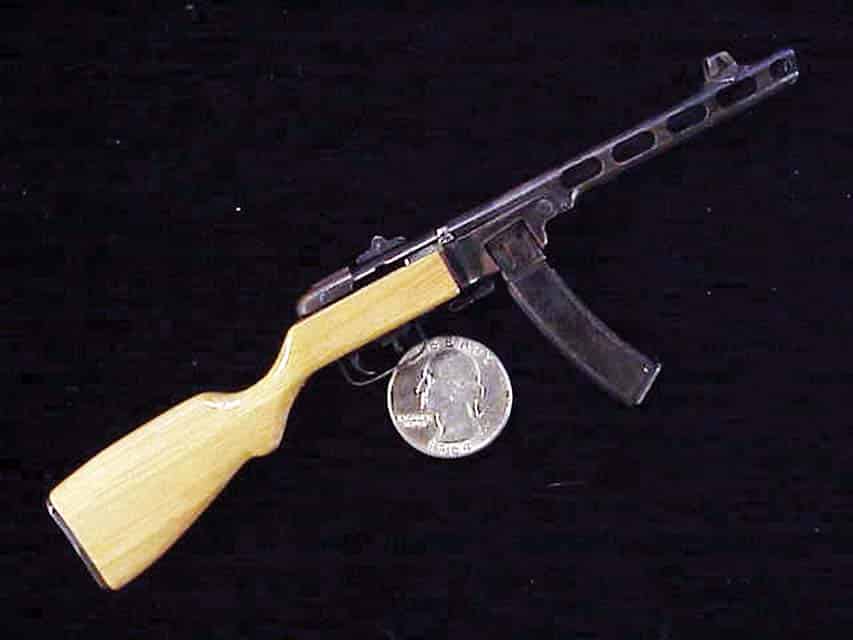
The Kucers also explained that they’ve relied on a time-tested method for making miniatures—one that has gone back to the days of these being salesman samples. That involves having a real one, copying each part in scale and producing an exact copy in miniature. This is why, despite the fact that they don’t produce ammunition, the firearms are otherwise fully functional in every other respect. “My dad’s approach was always to have an original, take it apart and copy each piece,” said Zavie. “More importantly this also involved using the same materials and the same method of manufacture. To replicate the guns in such detail requires this level of examination of the firearm. Drawings and even diagrams aren’t good enough.”
As a result there is a lot of hand finishing involved that couldn’t be accurately represented in a drawing. “We always have to have the original,” added Zavie. “This allows us to make an exact copy of everything including the screws, the springs but also the bluing and the tempering.” When the Kucers produced a Colt 1849 revolver, it featured brass and silver plating, along with a stage coach scene engraved on the gun just like the original.
However, there have been a few guns that haven’t been made due to the complexities of the original. “There was one I really wanted to do,” said David Kucer. “It was a Colt Lightning Rifle, but it was too complicated and too big for our equipment.”
The scale of the weapons varies, but popular today with collectors are those that are in the one-third and one-fourth scale. Obviously the larger the scale, the more detail collectors can appreciate, but part of the appeal is in how small one can go. “It becomes increasingly difficult to make a functional firearm when you go smaller,” said Wayne Driskill. “When you get the cylinder working on these really small guns, it is like working on a watch. You’re talking tens of a thousand of an inch in precision. But it can be impressive to see something like the Colt Navy Revolvers in 1/12 scale, which is smaller than G.I. Joe but is still functional. That is doll house size!”
Modern Copies
The Kucers are part of a dying breed, made worse by the fact that the only production-made miniatures were produced by the now-defunct MiniArt in Russia and by Aldo Uberti, Srl—the latter being the Italian maker of full-sized historic firearms (ubertireplicas.com).
The mass-produced guns by Uberti can be a good entry point for the new collector, at least compared to a similar handmade gun from Kucer and others. In comparison, a Kucer-made example could be near to $5,000 while a similar Uberti version might be several hundred dollars to $1,000 on the high end. However, some would argue the craftsmanship is a world apart. Then there is the new wave of low-end diecast versions that have come out of China. These are still a step up from toys but lack the overall detail of the handmade miniatures.
“From my perspective there is no comparison,” said Zavie Kucer. “My father and I make 10 to 12 pieces a year, and our prices mean we’re in a completely different demographic of collectors. What I’ve seen is that new collectors start low and get comfortable in the field and move up. That is true of real firearms, and that is true of miniatures.”
Bob Urso added that he used to produce about 30 a year, but has slowed down in recent years. “I’m 76, and I’m retired,” he added. “This is a labor of love for me. Plus there are some very good makers in the Ukraine and Russia that are producing what I used to.”
This is why the diecast versions will never appeal to the serious collectors, as there are now lower cost, high quality alternatives. While the diecast versions might be worthy of decorating a desk at the office, they aren’t the sort of things that are meant to be on display and likely won’t appreciate over time the way these quality scale miniatures could. In fact, because there are so few being made for collectors it is now like buying real vintage firearms.
“I’m not really getting any ‘new stuff,’” said Wayne Driskill. “What I’m now dealing in is recycling the stuff that was first sold 25 or more years ago. And just like old art, sometimes it can be a factor of 25 to 50 times more depending on who made it. Certain artists who made these guns back in the day bring more money than the unknowns.”
And that is where, again, it is easy to see the connection to works of art. Not just in the craftsmanship but in terms of how the good “stuff” will only appreciate over time.
| This article first appeared in Small Arms Review V23N9 (Nov 2019) |



